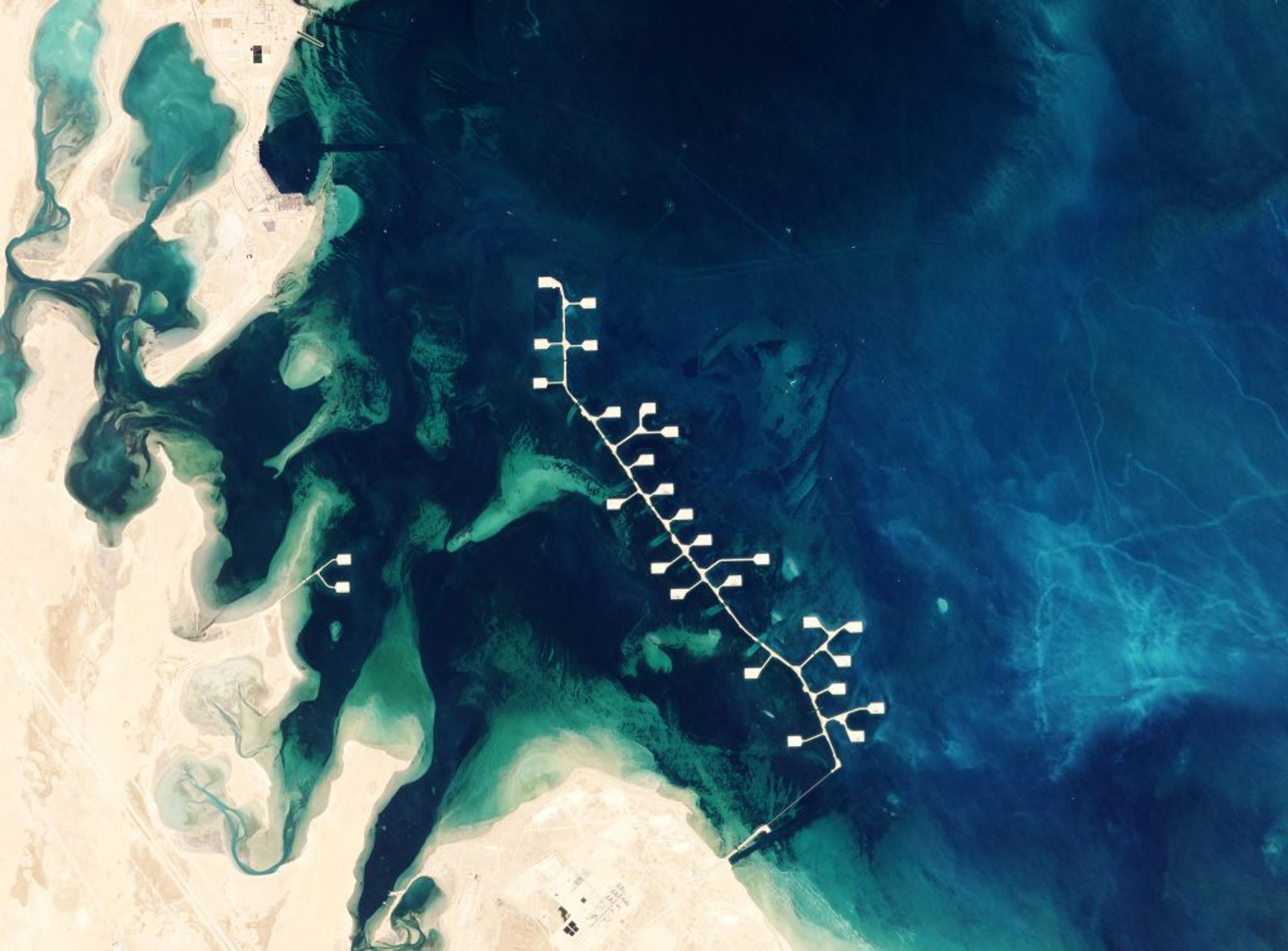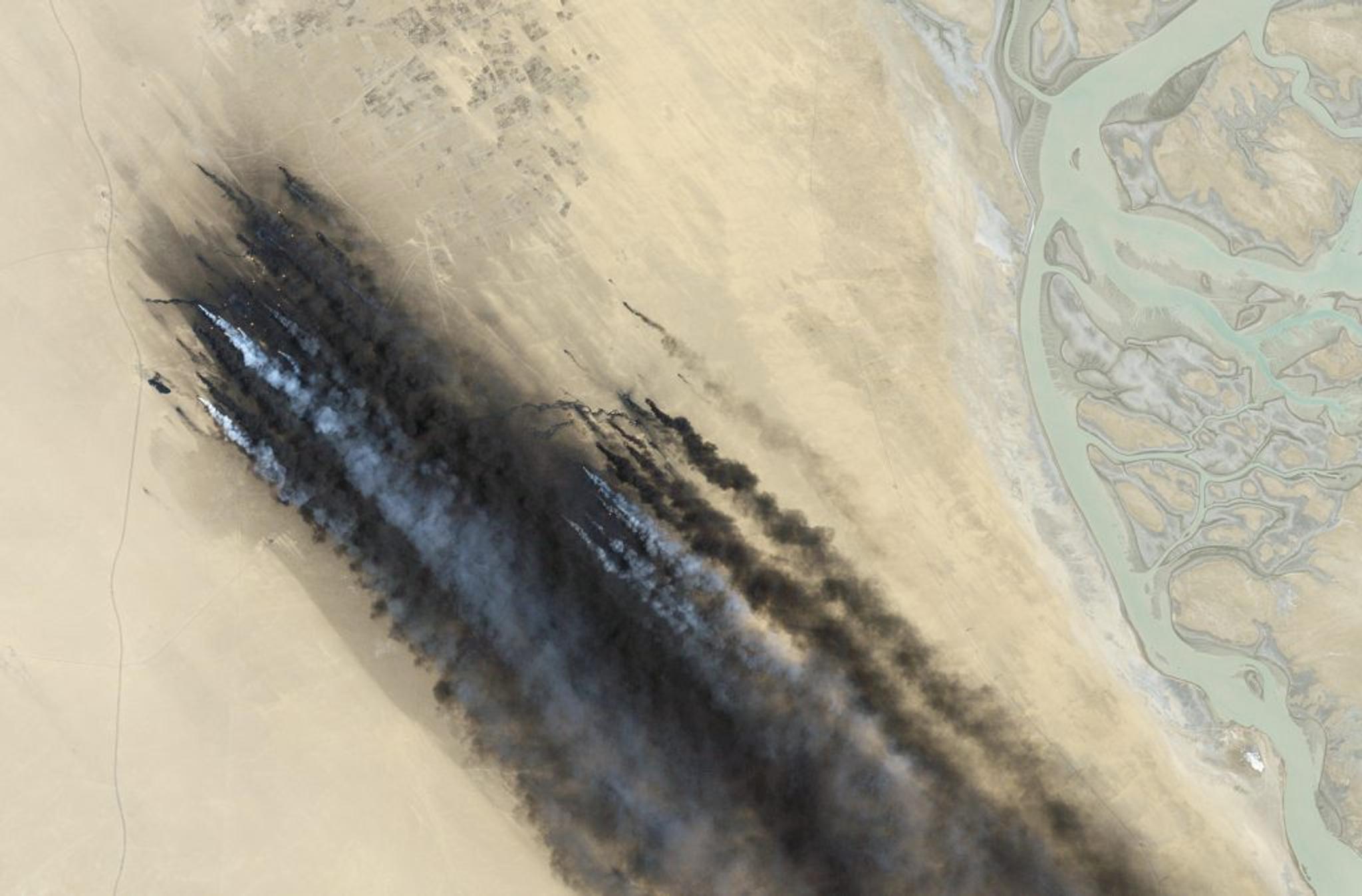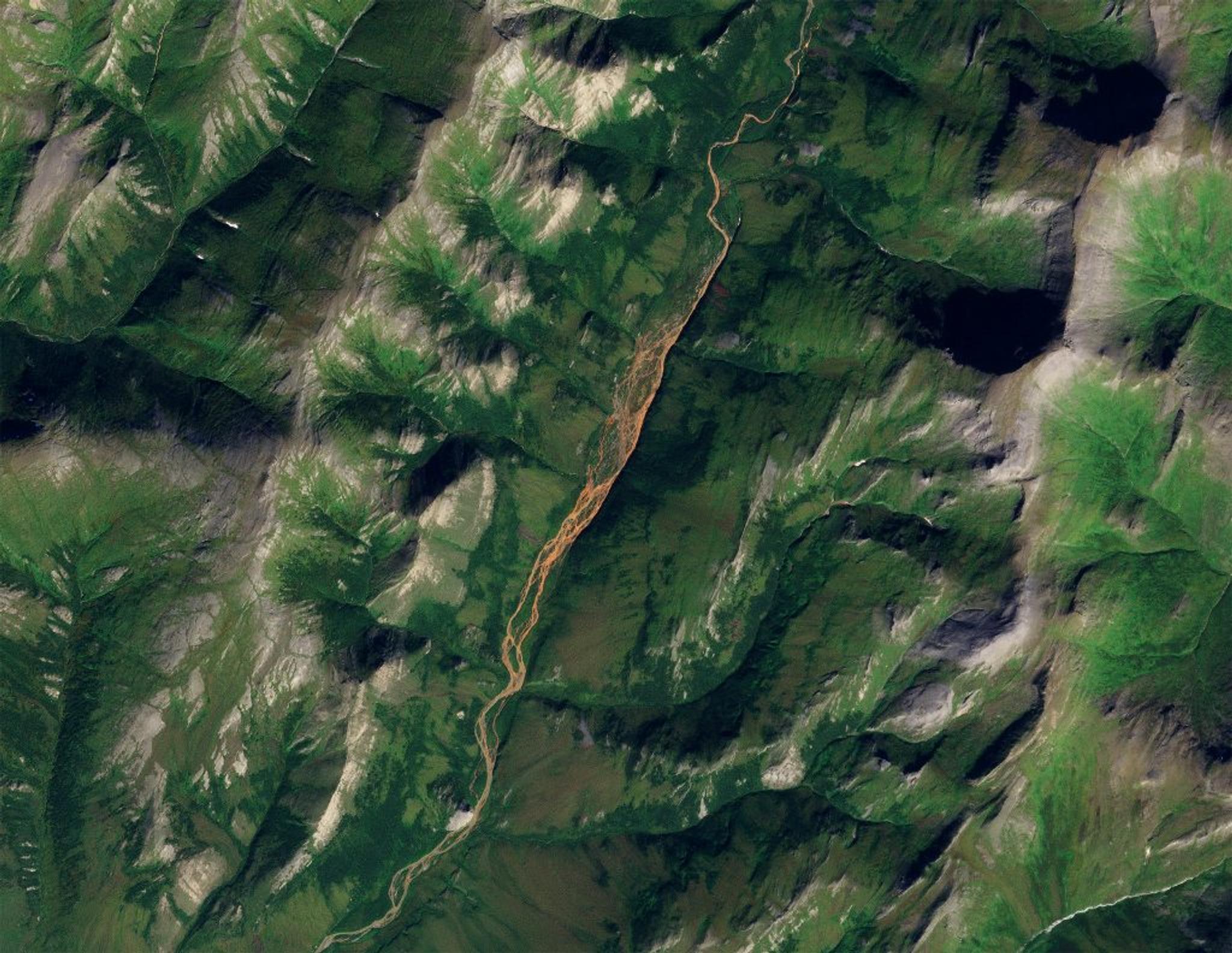Snapshots of our World: Energy: Fossil Fuels + Iron Rivers + Current Mystery
Here at Planet, we capture snapshots of our world everyday. A lot of them. But sometimes the message from space isn't clear. Our weekly newsletter, Planet Snapshots, makes understanding satellite images and the stories they reveal easy. We're kicking-off 2024 by sharing a select number of issues here on Pulse, so keep an eye out for these eye-opening stories that explore our changing world.
- We kick off our energy series with the top dog: fossil fuels
- Orange rivers in Alaska
- A river mystery in Colombia
Feature Story: Energy: Fossil Fuels
If you’re reading this then you owe gratitude to fossil fuels. That statement may seem odd coming from a company who supports ESG, but we like to keep things honest. Without fossil fuels there’d be no Moon landing and aerospace industry, no computers, no global trade, and no drives to the beach to watch a sunset. Fossil fuels built life as we know it, but we also know it can’t last forever. All of yesterday’s growth and fun came with a steep price tag. And like the morning after too much indulgence, we’re nursing a hangover, surveying the mess, and figuring out what to do next.
Over the coming months, we’re going to examine different sectors and facets of global energy systems: where they stand, how they’re changing, and the role satellites play in helping facilitate this massive transition. We’ll trace supply chains as they move from open-pit mines to self-driving electric vehicles. We’ll look at the rise and fall of alternate forms of energy and how they support the new resilient society we’re building. But if you’re critically examining the workings of the global energy empire, you’d better start with the king: fossil fuels.
SkySat • Jamnagar Refinery, Jamnagar, Gujarat, India • May 6, 2023
We’re grouping oil, gas, and coal together to keep things simple, but they’re not equal in terms of extraction methods or warming potential. And yet every major and minor industry has these easily transportable, energy dense, and exhaustible resources to thank. As Bill McKibben puts it: "Just buying fossil fuel requires almost a tenth of global GDP, and almost all the other 90 percent depends on burning the stuff."

PlanetScope • Prudhoe Bay Oil Field, Alaska North Slope, Alaska, USA • July 5, 2021
Fossil fuel emissions are still rising, but demand for oil is expected to drop in the coming years. The energy hierarchy is shifting. But fossil fuel companies aren’t quite shaking in their boots yet. The industry giants continue to extract resources and sow misinformation in order to keep the party going. Profits for major oil companies continue to soar (anyone paying $6/gal at the pump could have guessed that). And all the while they’re doubling down on investments and complex methods to extract more from their shrinking reserves (like fracking and offshore drilling).

PlanetScope • Manifa Oil Field, Saudi Arabia • September 17, 2022
Not to mention that rapidly growing countries like India are set to double coal production this decade. But you can’t really blame them. Vilifying fossil fuels and hampering other countries' race to modernization is hypocritical at best. In the world we’ve built, progress requires energy, and energy ain’t cheap or easy. Any conversation about the topic is bound to make the environmentalists mad, the industrialists defensive, the ethicists dumbfounded, and your everyday consumer more confused than someone trying to understand what “clean coal” even means.

Data from USGS/NASA, processing by Planet • Smoke from burning oil wells in Kuwait • July 1, 1991
We don’t need to tell you that 2023 being declared the hottest year on record and the fossil fuel industry’s continual growth isn’t a coincidence. Or that the effects of rising atmospheric emissions are harming everything in the long run, even fossil fuel infrastructure (which might be comically ironic if the health of the planet wasn’t in jeopardy). But what’s worth exploring is just how vulnerable this system is to unexpected shocks and external factors.
SkySat • Balongan refinery fire, West Java, Indonesia • April 4, 2021
In technical terms, power is a measurement of energy usage over time. But politically, power is held by those who control energy. Energy supply is weaponized in times of conflict and often acts as a barometer of geopolitical tension. Crude oil prices increased by over 50% following Russia’s invasion of Ukraine and didn’t recover until a full year later. And the explosion of the Nord Stream pipelines in September 2022 cut off Europe’s major supply of natural gas sourced from the Russian fossil fuel behemoth.

PlanetScope • Nord Stream Pipeline Breach, Baltic Sea • September 26, 2022
Many countries are quick to slap oil sanctions on others as a penalty for political trespasses. But oil tankers skirt these regulations just as fast. Analysts tracking these illegal oil transfers have a few tools available to help shed light on the shadowy network of dark vessels and criminal enterprises, and the value of satellite data is a uniquely powerful verification tool. Allegations like those lobbied against a Greek shipping company last year were confirmed after the Associated Press analyzed satellite photos and shipping data to confirm an oil transfer in the South China Sea.

PlanetScope • Virgo and Suez Rjana vessels in the South China Sea • February 13, 2022
The infrastructure built to extract, process, transport, and move these resources across the globe is as utterly impressive as it is damaging. Each stage is often associated with some degree of harm, whether its oil spills, pipelines built across protected land, or the planet-warming carbon pumped into the atmosphere. Every energy source has its tradeoffs, but it’s increasingly clear that fossil fuels are unsustainable. The trick in the coming decades will be to use all we’ve built with this energetic momentum into a modernized, resilient system.
SkySat, reported by Grist • Construction of Calcasieu Pass LNG Export Facility, Louisiana, USA • January 5, 2019 - April 16, 2023
Our prognosis is a bit like this: we just had our first heart attack after exclusively eating steak our whole lives. Now we’re coming to terms with how bad it is for our health and the simple fact that there are few cows left. If we want to be healthy, resilient, and keep on living, we’ll need to diversify our energy portfolio and power our industries from sources that harm Earth’s biosphere far less than what we’re using now. That’ll ultimately require keeping fossil fuels where fossils belong: the museum or the ground.

SkySat • Ras Tanura Refinery, Saudi Arabia • October 25, 2022
Climate Watch: Iron Rivers
Add this to your list of unexpected sights in a climate-impacted future: orange rivers. Scientific American ran a story on the scientists studying why certain Alaskan Rivers found in places revered for their “unspoiled” status are now turning orange. They’re researching whether the sulfur and iron rich water are caused either by bacteria or acid from minerals, but they all agree on the primary culprit: thawing permafrost due to climate change.

PlanetScope • Tukpahlearik Creek, Alaska, USA • August 23, 2023
What in the World: Buenaventura
There’s a whole lot happening and a whole lot we don’t know going on in this image. Buenaventura, Colombia’s main port city, is surrounded by a number of different rivers and tributaries, which likely contribute to the medley of aquatic colors here. But if you have a better guess as to what might explain the variation, reach out!
PlanetScope • Buenaventura, Colombia • November 25, 2023
Weekly Revisit
Last week we continued our Atlas series with a look at (some of) the tens of thousands of Pacific islands that make up Oceania.
SkySat • Runit Dome, Runit Island, Marshall Islands • December 25, 2023

Ready to Get Started
Connect with a member of our Sales team. We'll help you find the right products and pricing for your needs


